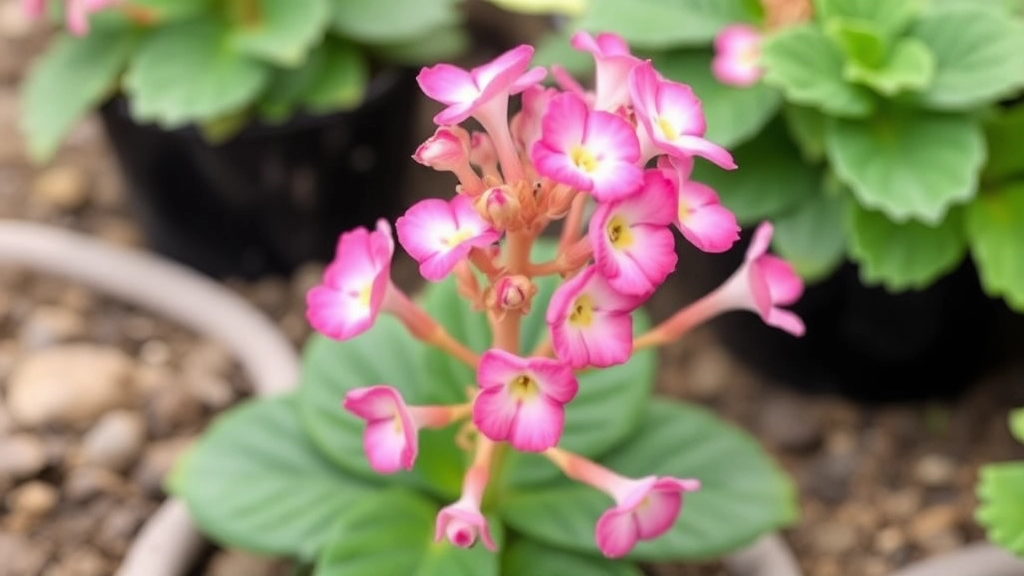How to Care for Kalanchoe Tubiflora
Ever wondered how to care for the Kalanchoe Tubiflora, commonly known as the Mother of Millions? This fascinating succulent is a favourite among gardeners and succulent enthusiasts for its easy propagation and low-maintenance nature. In this guide, I’ll share practical tips on growing, caring for, and managing this prolific plant, ensuring it thrives in your garden or indoor space.
Unique Characteristics of Kalanchoe Tubiflora
First, let’s dive into the unique characteristics of Kalanchoe Tubiflora. Known for its ability to produce numerous plantlets, this succulent can quickly fill your garden. However, its aggressive growth requires some management. I’ll walk you through the best propagation methods, optimal growing conditions, and essential care tips to keep your Mother of Millions healthy and vibrant.
## Characteristics of Kalanchoe Tubiflora
When considering adding Kalanchoe Tubiflora, also known as Mother of Millions, to your collection, you may wonder what makes this succulent so special.
### Unique Features
Kalanchoe Tubiflora is renowned for its striking appearance and unique propagation method. Here are some key characteristics:
– **Leaf Structure**: The leaves are thick, fleshy, and oval-shaped, often displaying a vibrant green hue with a slight waxy coating.
– **Growth Habit**: This plant grows upright, reaching heights of up to 1 metre (3 feet). The stems can become quite woody over time.
– **Reproduction**: One of the most fascinating aspects is its ability to produce tiny plantlets along the edges of its leaves, which can easily root in soil, leading to rapid propagation.
– **Flowers**: In ideal conditions, Kalanchoe Tubiflora produces clusters of tubular flowers, typically in shades of pink or red, which add to its ornamental value.
These characteristics not only make Kalanchoe Tubiflora visually appealing but also contribute to its reputation as a resilient houseplant.
### Ecological Impact
While beautiful, it’s important to note that Kalanchoe Tubiflora can be invasive in certain regions. Its ability to propagate quickly can lead to overcrowding in gardens or natural habitats. For more information on managing this, you might find our [complete guide to growing Kalanchoe Mother of Thousands](https://planthq.org/complete-guide-to-growing-kalanchoe-mother-of-thousands/) helpful. Additionally, if you’re interested in other Kalanchoe varieties, check out our [types of Kalanchoe Tomentosa](https://planthq.org/types-of-kalanchoe-tomentosa-varieties-and-care-tips/).
Propagation Methods of Mother of Millions
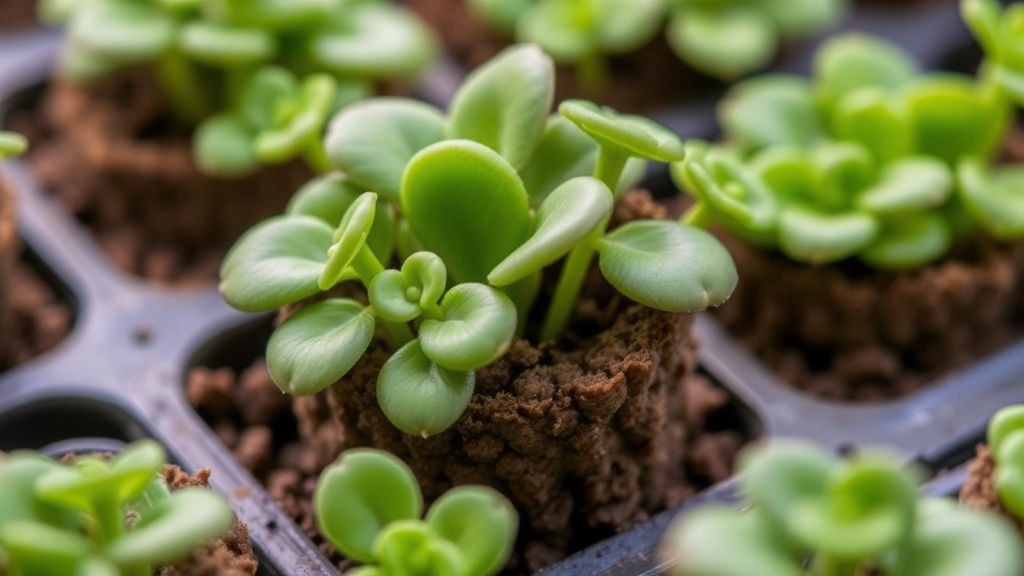
So, you’re keen on expanding your Kalanchoe Tubiflora collection? You’re in for a treat! This plant is not just gorgeous but also super easy to propagate.
Why Propagate?
Many folks ask, “Why should I propagate?” Well, it’s a fantastic way to share the love with friends or fill your home with more greenery without spending a penny. Plus, it’s a fun little project to get your hands dirty!
1. Leaf Cuttings
One of the simplest ways to propagate Mother of Millions is through leaf cuttings. Here’s how to do it:
- Snip a healthy leaf from the plant.
- Let it dry for a day or two to form a callous on the cut edge.
- Place it on a well-draining soil mix.
- Keep it moist but not soggy.
- In a few weeks, you’ll see tiny plantlets forming!
2. Offsets
Another popular method is using offsets, or the little plantlets that grow around the base. Here’s the scoop:
- Gently twist or cut the offsets from the mother plant.
- Allow them to dry for a day.
- Plant them in their own pots with a suitable soil mix.
- Water lightly, and watch them thrive!
3. Seed Propagation
Feeling adventurous? You can also try seed propagation, though it’s a bit trickier:
- Collect seeds from mature flowers.
- Sow them in a seed tray filled with a light potting mix.
- Keep them warm and moist until they germinate.
- Once they’re big enough, transplant them into individual pots.
Propagation not only helps you grow your collection but also keeps your Kalanchoe Tubiflora healthy and vibrant.
Optimal Growing Conditions for Kalanchoe Tubiflora
When considering how to care for Kalanchoe Tubiflora, understanding its optimal growing conditions is paramount.
Ideal Environment
Kalanchoe Tubiflora thrives in specific conditions that mimic its native habitat. Here are the essentials to keep your plant happy:
- Temperature: Aim for a range between 20°C to 30°C (68°F to 86°F) during the day. At night, it can tolerate cooler temperatures down to 10°C (50°F).
- Humidity: Low humidity is preferred. This succulent does best in dry environments, making it ideal for indoor settings.
- Air Circulation: Good airflow is crucial. Avoid placing it in overly cramped spaces to prevent fungal diseases.
Light Requirements
Light is a vital aspect of Kalanchoe Tubiflora’s care:
- Direct Sunlight: It loves bright, direct sunlight for at least 6 hours a day. A south-facing window is perfect.
- Filtered Light: If direct sunlight is too intense, filtered light will suffice, but be cautious of too much shade, as it can lead to leggy growth.
Growth Period
Understanding the growth pattern can help you plan care:
Watering Requirements for Kalanchoe Tubiflora
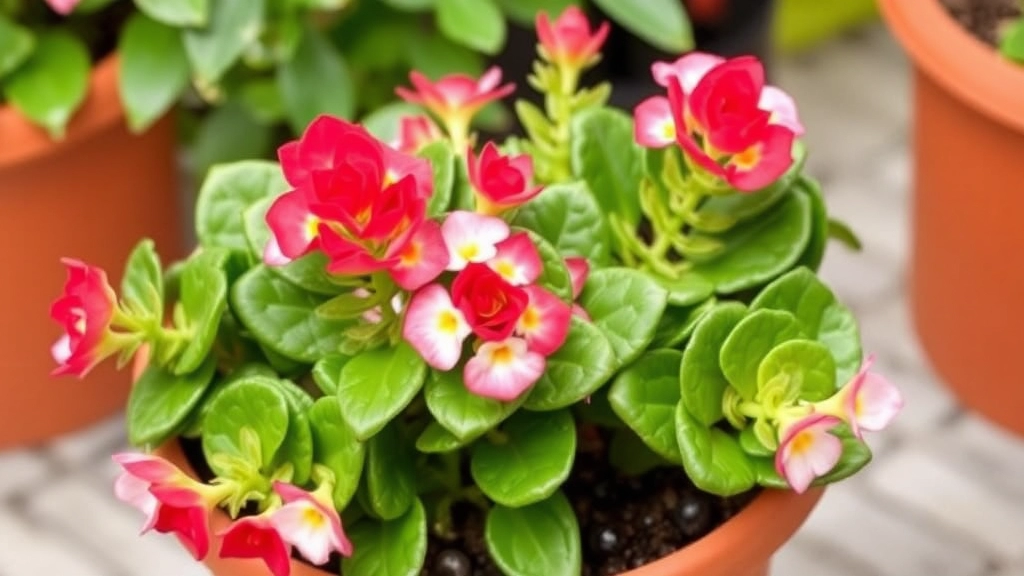
When it comes to caring for Kalanchoe Tubiflora, understanding its watering needs is crucial for promoting healthy growth. Many plant enthusiasts often worry about overwatering or underwatering their Mother of Millions.
Key Watering Guidelines
- Frequency: Water your Kalanchoe Tubiflora every 2-3 weeks during the growing season (spring and summer). In the dormant winter months, reduce watering to once a month.
- Soil Check: Always check the top inch of the soil. If it feels dry, it’s time to water. If it’s still moist, hold off for a few more days.
- Watering Technique: Water deeply but infrequently. Ensure that excess water drains out of the pot to prevent root rot.
- Humidity Considerations: Kalanchoe Tubiflora thrives in low to moderate humidity. Avoid misting, as this can lead to fungal issues.
Signs of Overwatering and Underwatering
- Overwatering: Yellowing leaves, mushy stems, or a foul smell from the soil can indicate excess moisture.
- Underwatering: Wrinkled or shrivelled leaves are signs that your plant needs water.
In summary, striking the right balance in watering is essential for the health of Kalanchoe Tubiflora. By keeping an eye on the moisture levels and adjusting your watering schedule accordingly, you can ensure your plant flourishes.
Soil and Potting Mix Suggestions
Soil and Potting Mix Suggestions for Kalanchoe Tubiflora
When it comes to nurturing your Kalanchoe Tubiflora, the right soil and potting mix are crucial for its growth and overall health. Many plant enthusiasts worry about the best medium to use, and selecting the appropriate soil can make all the difference.
Ideal Soil Composition
Kalanchoe Tubiflora thrives in well-draining soil. Here are some key elements to consider when choosing your potting mix:
- Cactus or Succulent Mix: This type of mix is specifically designed for plants that require excellent drainage.
- Perlite or Pumice: Adding these materials can enhance aeration and drainage, preventing root rot.
- Organic Matter: A small amount of compost can provide essential nutrients without retaining too much moisture.
Potting Tips
- Container Choice: Select pots with drainage holes to allow excess water to escape.
- Size Matters: A pot that is slightly larger than the root ball will encourage growth without overwhelming the plant.
Custom Mix Recipe
If you prefer to create your own potting mix, consider the following simple recipe:
- 2 parts cactus mix
- 1 part perlite
- 1 part coarse sand
This blend ensures your Kalanchoe Tubiflora receives the right balance of nutrients while maintaining optimal drainage.
For more detailed care tips, you can refer to our Chandelier Plant Kalanchoe Care Guide. Additionally, if you’re interested in other Kalanchoe varieties, check out our Top Kalanchoe Succulent Varieties and Care Tips.
Sunlight and Temperature Needs

So, you’ve got your Kalanchoe Tubiflora, and you’re wondering how to keep it thriving.
Sunlight: The Key to Vibrant Growth
Kalanchoe Tubiflora loves the sun.
But how much sunlight is too much?
- Ideal Lighting: Aim for bright, indirect sunlight. A south or west-facing window is perfect.
- Direct Sunlight: While it can handle some direct sun, too much can scorch those lovely leaves.
- Signs of Too Much Sun: If you notice leaf burn or fading colour, it’s time to move your plant to a shadier spot.
Temperature: Keeping it Cozy
Temperature is just as crucial as sunlight.
Kalanchoe Tubiflora prefers a warm environment.
- Optimal Range: Keep it between 20°C to 30°C (68°F to 86°F) during the day.
- Nighttime Chill: It can tolerate cooler nights, but don’t let it drop below 10°C (50°F).
- Avoid Drafts: Keep your plant away from cold drafts or sudden temperature changes.
Common Pests and Diseases
As we delve deeper into the care of Kalanchoe Tubiflora, it’s essential to be aware of the common pests and diseases that can affect this resilient plant.
Controlling Overgrowth and Invasiveness
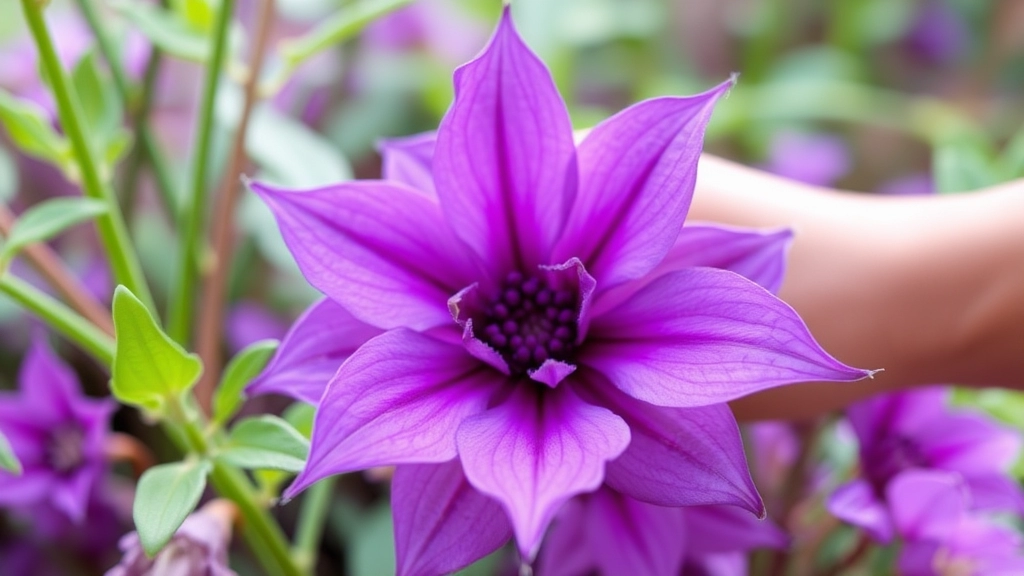
So, you’ve got a Kalanchoe Tubiflora, or as many call it, the Mother of Millions. It’s a beautiful plant, but it can be a bit of a handful when it comes to managing its growth.
Why Does It Get Out of Hand?
Kalanchoe Tubiflora is notorious for its ability to produce tiny plantlets along the edges of its leaves. These little guys can drop off and root themselves, leading to a rapid increase in your plant population.
Here’s How to Keep It in Check:
- Regular Monitoring: Keep an eye on your plant. Check for those little plantlets and remove them before they take root.
- Strategic Pruning: Don’t be shy about trimming back your Kalanchoe. Prune it regularly to maintain its shape and prevent it from becoming leggy. Aim for a tidy look while encouraging bushier growth.
- Container Control: If your Kalanchoe is in a pot, consider using a smaller container. This limits the space available for overgrowth and makes it easier to manage.
- Limit Fertiliser: Over-fertilising can lead to excessive growth. Stick to a balanced fertiliser and use it sparingly.
- Companion Planting: Plant your Kalanchoe alongside species that can compete for space. This can help limit its spread while adding variety to your garden.
Real-Life Example:
I once had a Kalanchoe that took over my windowsill. I was constantly removing plantlets. After I started pruning more frequently and limiting its fertiliser, it became much easier to manage, and I actually enjoyed its presence more!
Seasonal Care: Indoor vs Outdoor Maintenance
Are you wondering how to keep your Kalanchoe Tubiflora thriving throughout the different seasons?
Understanding the seasonal care for your Mother of Millions is crucial for its overall health and vibrancy.
Indoor Maintenance
When growing Kalanchoe Tubiflora indoors, consider the following:
- Temperature Control: Keep your indoor space between 15°C to 25°C.
- Humidity Levels: Ensure low humidity; these plants prefer drier air.
- Light Exposure: Place near a south or west-facing window for optimal sunlight.
- Fertilisation: Use a diluted liquid fertiliser every 4-6 weeks during spring and summer.
Outdoor Maintenance
For outdoor cultivation, here’s what you need to focus on:
- Sunlight: Choose a spot that receives full sun for at least 6 hours daily.
- Soil Drainage: Ensure well-draining soil to prevent root rot.
- Temperature Awareness: Protect from frost; Kalanchoe Tubiflora thrives in warmer climates.
- Watering Regime: Water less frequently in cooler months, allowing the soil to dry out between watering.
Seasonal Considerations
- Spring: This is the ideal time for repotting and fertilising. For more detailed steps, check out our step-by-step guide to planting Kalanchoe in a pot.
- Summer: Monitor for pests and ensure adequate watering. Learn more about optimal care in our indoor vs outdoor care guide for Kalanchoe Blossfeldiana.
- Autumn: Gradually reduce watering as temperatures drop.
- Winter: Keep your plant in a warm location and minimise watering.
X. Pruning Techniques for Healthier Growth
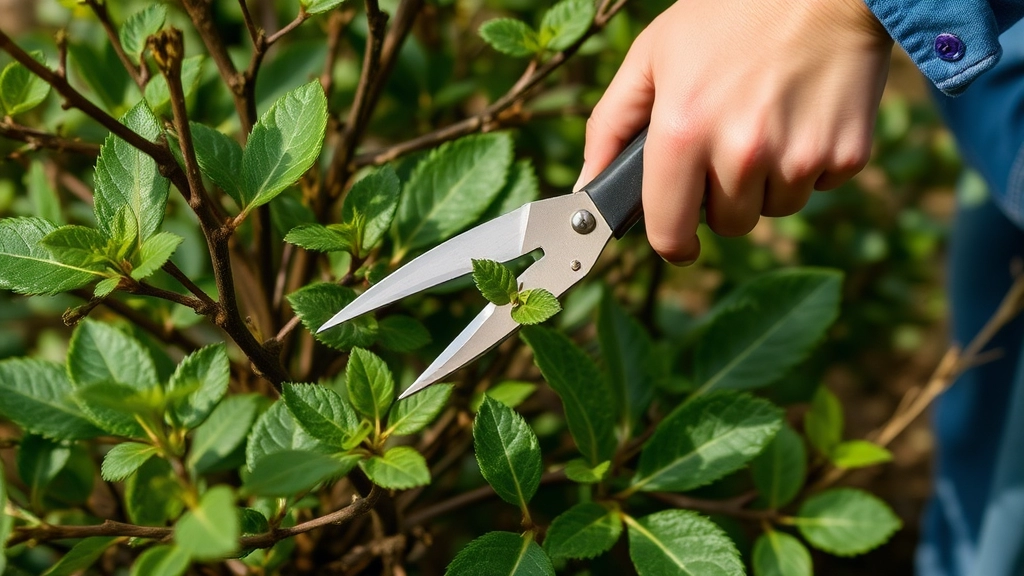
So, you’ve got your Kalanchoe Tubiflora thriving, but now you’re wondering how to keep it in check and looking its best, right? Pruning is a game-changer for ensuring your Mother of Millions stays healthy and vibrant.
Why Prune?
- Promote Growth: Regular pruning encourages bushier growth and helps your plant focus its energy.
- Control Size: It keeps your Kalanchoe from becoming a wild jungle in your home or garden.
- Remove Dead Leaves: Snipping off any dead or yellowing leaves not only looks better but also prevents disease.
When to Prune?
- Spring: This is the best time to give your plant a good trim as it’s gearing up for growth.
- After Flowering: Once the blooms fade, it’s time to tidy up.
How to Prune?
- Use Clean Tools: Always start with clean, sharp scissors or pruning shears to avoid any infections.
- Identify What to Cut:
- Remove any dead or damaged leaves.
- Trim back leggy stems to promote fuller growth.
- If your plant is overgrown, cut back about a third of the plant.
- Make Clean Cuts: Cut just above a leaf node or joint to encourage new growth.
- Don’t Overdo It: Less is more! Avoid taking off too much at once.
Tips for Success:
- Frequency: Check your plant every few months and prune as needed.
- Observe Growth Patterns: Each plant is unique. Pay attention to how yours responds to pruning.
Toxicity and Safety Precautions for Pets
As we delve deeper into the care of Kalanchoe tubiflora, it’s essential to address a critical concern for pet owners: the plant’s toxicity.
Is Kalanchoe Tubiflora Safe for Pets?
Kalanchoe tubiflora, commonly known as Mother of Millions, is indeed toxic to cats, dogs, and other pets.
- Symptoms of Toxicity:
- Vomiting
- Diarrhoea
- Lethargy
- Abdominal pain
If your pet shows any of these symptoms after coming into contact with the plant, it’s crucial to seek veterinary assistance promptly.
Safety Precautions to Consider
To ensure the safety of your furry friends, here are some proactive measures you can take:
- Placement:
- Keep Kalanchoe tubiflora out of reach of pets.
- Consider placing it on high shelves or in rooms that are off-limits to them.
- Education:
- Educate family members about the plant’s toxicity.
- Encourage them to supervise pets around houseplants.
- Alternative Plants:
- If you have pets that are prone to nibbling on plants, consider non-toxic alternatives such as spider plants or Boston ferns.
For more information on keeping your pets safe around Kalanchoe plants, check out our detailed guide on Kalanchoe toxicity and treatment. Additionally, if you’re interested in learning about other Kalanchoe species and their care, visit our top flowering Kalanchoe species and care tips.
Best Practices for Long-Term Care of Kalanchoe Tubiflora
So, you’ve got your Kalanchoe Tubiflora thriving, but how do you keep it that way for the long haul?
Let’s dive into some best practices that’ll ensure your Mother of Millions stays healthy and vibrant.
FAQs: Kalanchoe Tubiflora (Mother of Millions)
What are the best methods for propagating Kalanchoe Tubiflora?
There are three main methods to propagate Kalanchoe Tubiflora: leaf cuttings, offsets, and seed propagation. Leaf cuttings involve snipping a healthy leaf and letting it dry before planting. Offsets are tiny plantlets that grow around the base and can be planted in their own pots. Seed propagation is more challenging but involves sowing collected seeds in a light potting mix.
How often should I water my Kalanchoe Tubiflora?
Water your Kalanchoe Tubiflora every 2-3 weeks during the growing season (spring and summer). In the dormant winter months, reduce watering to once a month. Always check the top inch of the soil to determine if it’s time to water.
What are the signs of overwatering and underwatering?
Overwatering can cause yellowing leaves, mushy stems, or a foul smell from the soil. Underwatering is indicated by wrinkled or shriveled leaves. Adjust your watering schedule accordingly to maintain plant health.
How much sunlight does Kalanchoe Tubiflora need?
Kalanchoe Tubiflora thrives in bright, indirect sunlight. A south or west-facing window is ideal. While it can handle some direct sunlight, too much can scorch the leaves. If you notice leaf burn or fading color, move the plant to a shadier spot.
What is the optimal temperature range for Kalanchoe Tubiflora?
The plant prefers a warm environment with daytime temperatures between 20°C to 30°C (68°F to 86°F). It can tolerate cooler nights but should not be exposed to temperatures below 10°C (50°F). Avoid placing it in areas with cold drafts or sudden temperature changes.
How can I control the overgrowth of Kalanchoe Tubiflora?
To manage overgrowth, regularly monitor and remove plantlets, prune the plant to maintain its shape, use smaller containers to limit space, avoid over-fertilizing, and consider companion planting to compete for space.
Why is pruning important for Kalanchoe Tubiflora?
Pruning encourages bushier growth, controls the plant’s size, and helps remove dead or yellowing leaves, preventing disease. It’s best to prune in the spring or after flowering.
What are the key tips for successful pruning?
Use clean, sharp tools, identify what to cut (dead or damaged leaves, leggy stems), make clean cuts just above a leaf node, and avoid over-pruning. Check your plant every few months and prune as needed.
References
-
Kalanchoe Tubiflora: Mother of Millions
-
Kalanchoe Tubiflora Care
-
Growing Mother of Thousands Indoors
